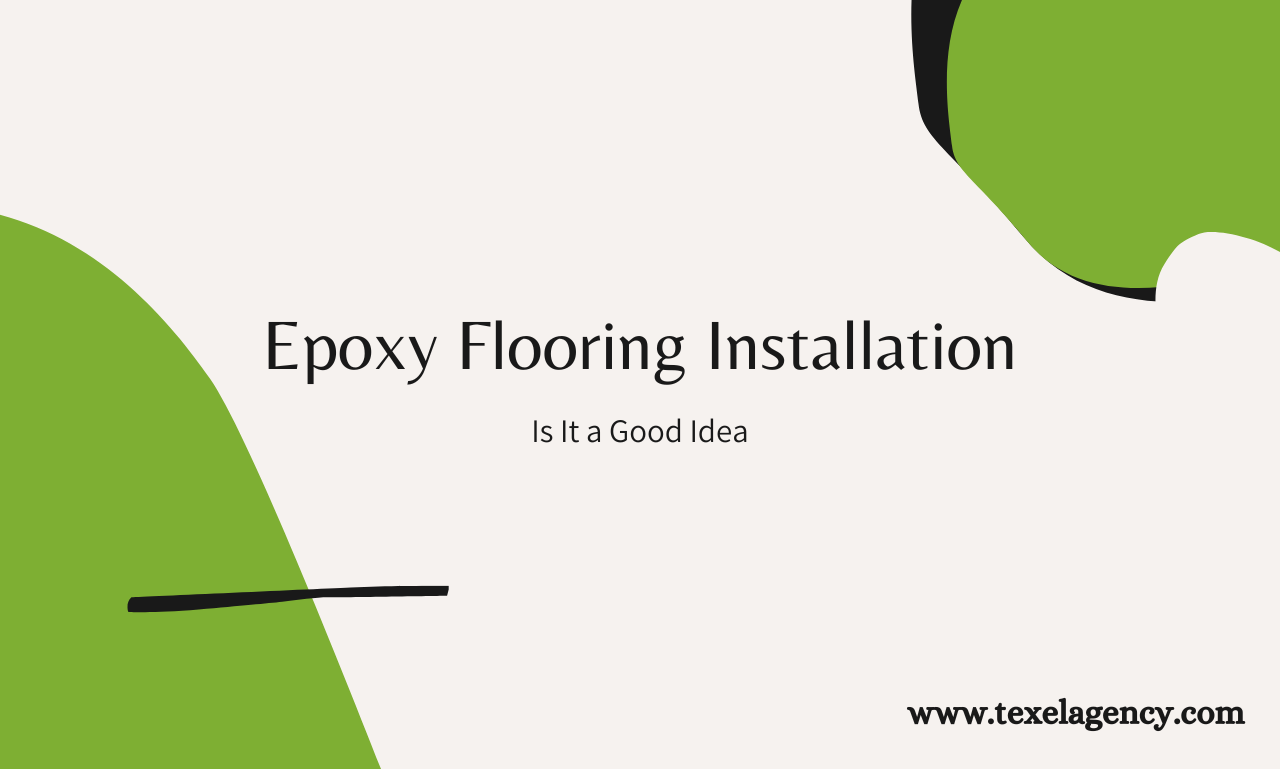Epoxy Floor Installation: Is it a Good Idea?
What is Epoxy Floor?
Epoxy flooring is a frequently used solution to have strength, longevity, and a better look for the floor in commercial, industrial, and warehouse structures. Epoxy flooring is ideal for covering basements or various exterior surfaces since it has great resistance to everyday use. This type of flooring is a surface made by covering a floor with several layers of epoxy.
The coating is at least two centimeters thick and it is significant to note here the difference between epoxy flooring and epoxy floor coating. Epoxy floors are ones in which the protective layer is a minimum of two millimeters in thickness, but epoxy floor coatings are those that are less than this.
Texel Agency is the leading epoxy flooring service provider in Coimbatore. We provide solutions for epoxy flooring, accessories, compressor, and equipment services for every industry. With the help of our skilled professionals, we are offering a wide range of epoxy flooring services cost-effectively. Our services are helping you to give an aesthetic look to your residential & industrial buildings, warehouses, shopping complexes, and parking areas.
Epoxy flooring, however, is not a standalone type of flooring, as it requires a metallic, cement, or timber floor base to be coated with it. Another term for epoxy flooring is resinous flooring, which is created by combining polymer resins and hardeners. This combination results in a rigid, plastic-like material that is highly durable and requires minimal maintenance. There are two types of epoxy flooring available: one designed for industrial settings and another for residential use.
Mechanism of Epoxy Flooring
The reaction between bisphenol-A (BPA) and epichlorohydrin (ECH), which can be acquired in either a liquid or solid state, yields the most extensively used epoxy resins. To make epoxy into a robust, infusible, and austere material, the resin must be treated with a hardener. Epoxy resins are easily set at all temperatures ranging from 5 to 150 °C. When resins are cured, they become epoxy thermoset polymers with unique properties for protest, adaptability, longevity, and the bonding process.
Coating of Epoxy Floor
Synthetic resin is used to make epoxy flooring. Layers of the chosen material are placed on uppermost on a concrete basis as a kind barrier and ornamentation to create the final result. The initial layer may be coated, trowelled, or poured with many coatings of thermosetting resin to create the floor.
Epoxy Floor Types
The several types of epoxy floorings are Epoxy mortar floors, Anti-static epoxy floors, Self-leveling epoxy floors, Quartz-filled epoxy floors, and Epoxy flake floors.
Epoxy Mortar Floor
Quartz sand and 100% solid epoxies constitute an epoxy mortar floor. It is utilized for floors that need a stronger resistance to both physical and chemical loads. Before using another form of epoxy floor, it may additionally be used to patch up cracks. This type of epoxy is utilized for flooring in industrial spaces, commercial cooking areas, storerooms, restaurants, parking lots, factories, and other places.
Anti-Static Epoxy Floors
Anti-static epoxy floors are used in flammable materials to control the fast flow of electricity to objects that are charged that result from touching is known as electrostatic discharge (ESD). It may have dangerous consequences such as gas explosions and the breakdown of tangible electronic components that result in long-term damage when exposed to high voltages. Anti-static is mostly used in industrial epoxy flooring to avoid damages caused by explosions, fires, flammable gases, and chemicals.
Self-Leveling Epoxy Floor
A self-leveling epoxy floor gives the surface a long-lasting, balanced shape to the old, new, affected, or damaged concrete floors. This kind of epoxy improves the floor’s appearance.
Quartz-Filled Epoxy Floor
Highly efficient epoxy polymer resin and tinted quartz grains combine to create the quartz-filled epoxy floor. This epoxy floor is used for aesthetic rooms that require hygienic and non-slip qualities.
Epoxy Flake Floor
Due to the inclusion of colored flake elements, epoxy flooring has an attractive look. The surface’s flakes also give it grooves to prevent falls and skids. This kind of epoxy can be used to improve every floor’s aesthetically pleasing qualities because it comes in a huge selection of colors, designs, dimensions, and patterns.
Installation Procedures of Epoxy Floor
- Setting up the floor surface is the first stage in installing the epoxy flooring.
- The floor surface needs to be ready to take the new epoxy coating coat applied on top of it.
- The surface should be free of any extraneous materials like dust particles.
- It is then frightened, shot-blasted, and ground to create a rough surface for improved adhesion to the primary floor.
- Epoxy flooring needs to have all the significant gaps on the floor patched and fixed to be durable.
- The floor is finished with a surface priming coat and ensuring that the primer penetrates the floor deeply while priming.
- Despite finishing the base coat, seal all of the floor’s noticeable cracks and holes with epoxy.
- The floor also needs to be relayered, gently dirt, and cleaned.
- To evaluate the sealant, a significant quantity of water is poured onto the floor.
- In the last step, a special epoxy resin and hardener are combined and several layers of the mixture are applied to the bottom surface.
- The epoxy floor gets dried at the necessary temperature after application.
- Only after the epoxy starts a reaction with a distinct curing agent does the curing process starts.
Advantages of Epoxy Floor
Epoxy flooring has several benefits compared to various standard flooring solutions. The benefits are detailed below:
- Increases the interior spaces’ brightness because epoxy produces an attractive, polished surface.
- Epoxy offers a long-lasting, rigid surface that can bear significant and ongoing loads.
- It doesn’t need any specialized machinery or tools and is simple to install.
- Epoxy flooring offers great chemical resistance and can withstand a wide range of chemicals, making them perfect for warehouses and industrial settings.
- It guards against the degeneration of the already-existing concrete layer.
- More durable and simple to clean.
- When epoxy adds anti-slip additives, safety is improved.
- While coupled with paints and colors, it helps to conceal defects and cracks.
- It aids in spotting walking areas when used differently.
- Improves the room’s aesthetic look.
- No maintenance is required.
Disadvantages of Epoxy Flooring
Every type of flooring has advantages as well as disadvantages likewise epoxy flooring has some disadvantages which are mentioned below.
- The fact that epoxy flooring is transitory is one of its main disadvantages.
- Although most epoxy flooring is anti-skid, oil-coated floors are not covered by this property. When these floors are drying, they can be quite slippery.
- Preparing flooring for epoxy painting takes a lot of work.
- The application procedure takes time in addition to the preparation.
- The fumes from a wet epoxy finish can be extremely hazardous.
- Your epoxy flooring should be installed by professionals and should be done by the instructions provided by the company.
- In highly affected regions, chipping and cracking are possible.
- The cost of maintenance is excessive.
Conclusion
Epoxy flooring is a versatile flooring option that is also highly chemically resilient, practical, and adaptable. You can choose an epoxy floor option for any purpose, fact that you want a magnificent entryway to accommodations or offices or need a robust surface that can resist industrial activity. Thoroughly read the advantages and disadvantages of epoxy flooring and make use of it. The cost of materials and installation for epoxy flooring is affordable. Use this and enhance the aesthetic look of your buildings
Leave a Reply
You must be logged in to post a comment.




